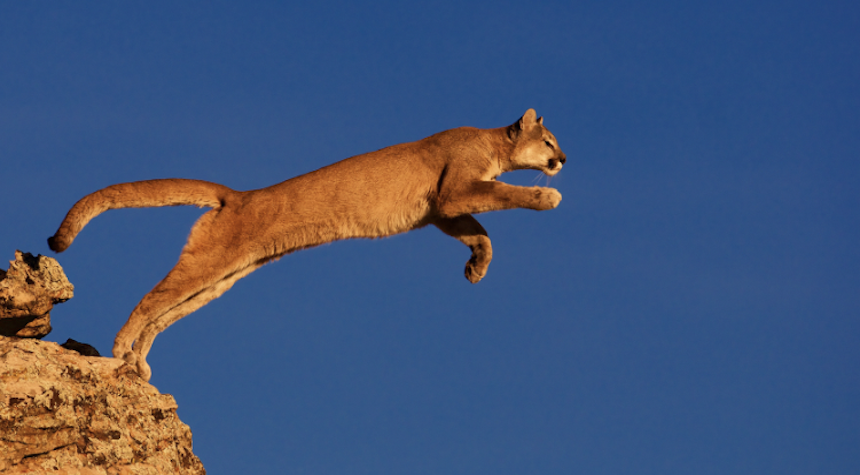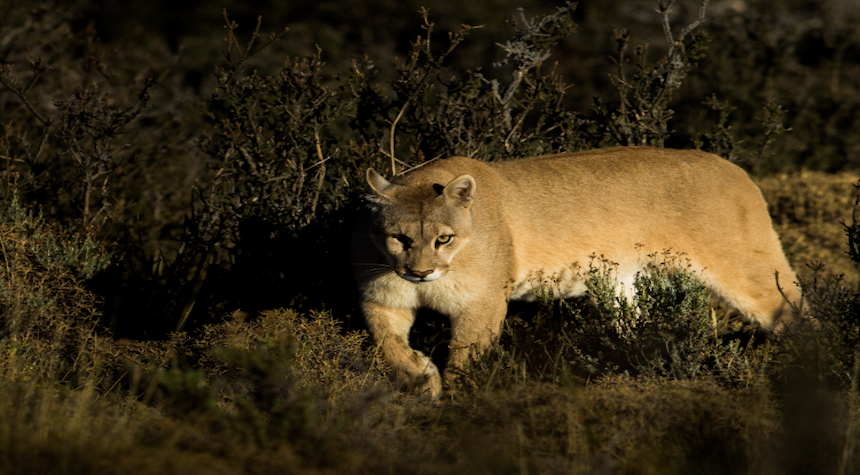Mountain lions can be fascinating creatures. Mountain lions are intelligent, adaptable, and somewhat reclusive. They spread faster than many people think. My mother and her sister saw a mountain lion cross the road near their home in Allamakee County in Iowa 1970. Mom, who was very knowledgeable about plants and wildlife, knew a mountain lion when she saw it. Around twenty years later, I read about a confirmed mountain lion sighting in western Iowa.
During my time in Colorado, I have seen them several times, but always at a distance. The state has about 7,000 cats. My hunting partner Rat (yes, this is what people call him), and I were out early one morning during elk hunt season to track a big tom in the snow. We did so for two miles to get a better look, but the tom sensed our presence and fled.
My experience with big cats is limited to Alaska. There are good estimates of big cat populations in many states of the lower 48, but they seem to have missed some data.

State game agencies estimate that there are between 20,000 to 40,000 mountain lions in the U.S., but this number can vary. Conservation groups such as the Mountain Lion Foundation, however, believe that the population is closer to 30,000. Many of these lions live in fragmented, degraded habitats.
Mountain lions can be found primarily in western states. They inhabit a variety of habitats, from dense forests of the Pacific Northwest up to the arid deserts and deserts of Southwest.
There are notable populations in California, Colorado and Arizona where conservation efforts have been made to reduce human-wildlife conflict and preserve habitats.
Except for Florida, the map only shows lions in states that are west of Mississippi. If we are only talking about breeding population, this may or may not be accurate. These animals are notoriously difficult to handle.

There have been confirmed sightings of lions in several eastern states, but these sightings are far removed from established breeding populations. This suggests that at least some breeding occurs east of the Mississippi. Connecticut, Illinois Indiana Michigan New York Tennessee and Wisconsin are some of the states that have confirmed lion sightings.
The big cats can adapt to a wide range of habitats, including rimrock and edge habitat. The big cats live in a variety of habitats from the Pacific Northwest rain forests to Everglades and from the dry rimrock to northern taiga. They have been spotted in California where hunting bans have caused them to lose their natural caution towards humans.
The big cats, like coyotes or black bears are returning to their former homes. It’s not a bad thing as long as we learn how to handle them. Make yourself appear intimidating if you are confronted with a lion. Raise your arms above your head. Scream at the cat. Fire a shot at the ground if you’re armed. Be prepared to use the weapon on the cat, if it becomes necessary.
Exercise your situational awareness. Be aware and prepared to handle what is around you. Sometimes we humans fall into the trap that we are somehow separate from nature. We’re not. And sometimes people get reminded in very unpleasant ways. Stay alert!


